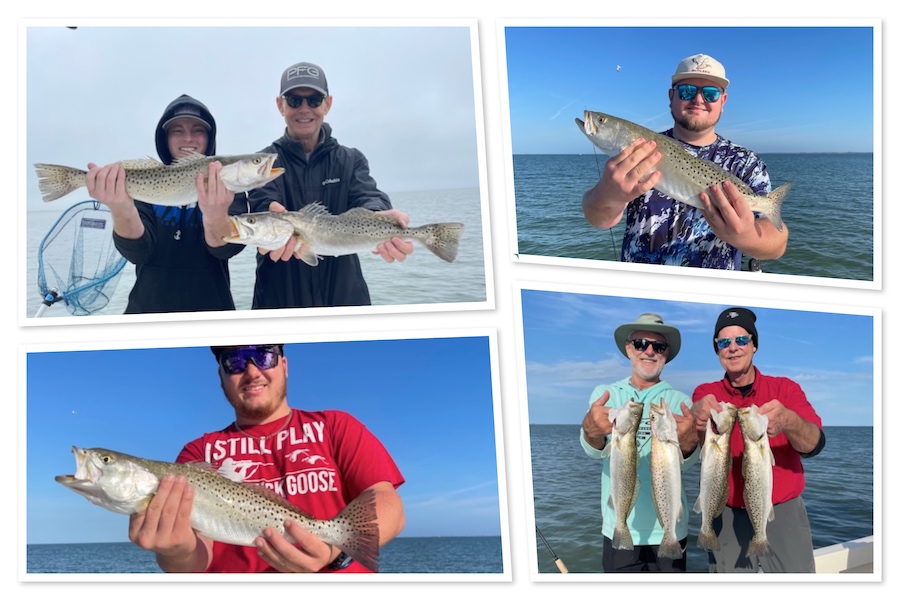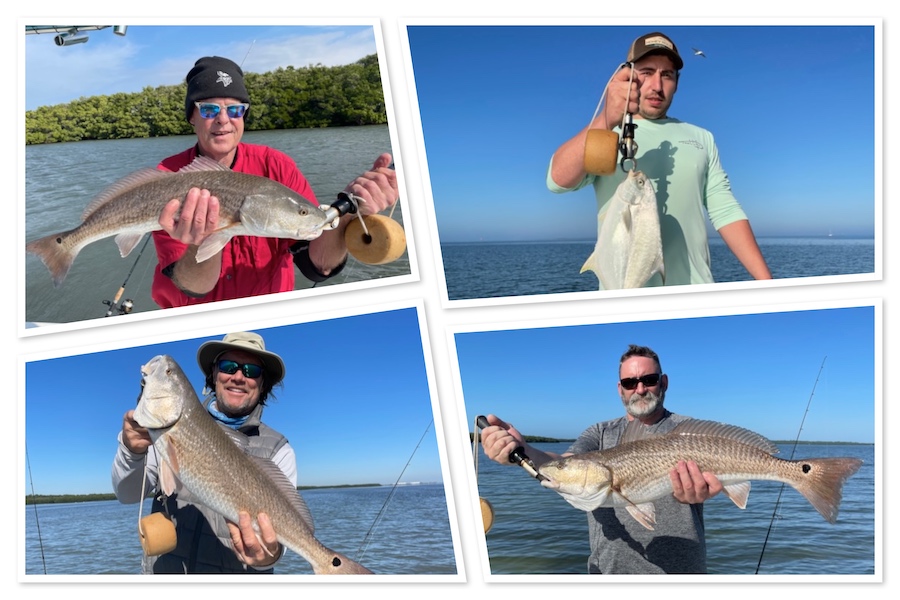As mid February approaches, Tampa Area Anglers begin to feel that the long winter is almost over…and better fishing is on the near term horizon. With higher tides starting to switch back to daytime hours, redfishing will improve as mangrove shorelines will receive enough water to become productive again. The large seatrout of winter will remain, likely until the beginning of April, with late February and March often producing some of the season’s largest fish. Near shore reefs should again hold keeper mangrove snapper and, as the end of March approaches, Spanish mackerel and kingfish could appear as well. Additionally, snook will wake up in the backwaters once temperatures start to settle in between 70 and 75 degrees.

Over the past month, large seatrout fishing has been dependable, with fish exceeding 20 inches caught on every trip. The approach is the same every day… move until fish are found as these big trout will eat, unless a recent cold front has temporarily scattered them. On a good day, a large group of fish will be located and limits are achieved quickly. On others, a fish are two may be caught off of a variety of locations, but limits are generally reached on these days as well. An added highlight to this trout fishing has been the arrival of 6 – 7 foot bull sharks. Once the trout bite heats up, and numerous fish are released, these sharks sense an easy meal and begin circling the boat, waiting for a trout that is too tired from being caught to effectively escape. On certain days, these fish will be seen swimming in extremely shallow water with their dorsal fins and tails fully out of the water. Since hooking these larger sharks generally leads to a “reel emptying” experience, Tampa fishing captains rarely try and hook them but these big animals are exciting to see up close and personal.

On days with extreme low tides or “high” winter tides (which are significantly lower than summer tides), a few redfish can be corralled as well. These fish can range from the ever present “winter rats” (15 – 18 inches) to fish in the 30 inch range. Most of the larger fish are solos or found with just one or two other fish. Running into large schools this time of year generally doesn’t happen. Typically, fish have been located on open flats and, since this fishing takes patience and durable baits, cut ladyfish, mullet, or pinfish seem to be the best choices. Like other times of year, casting into large schools of mullet, in productive areas, often pays dividends.
Should a string of warm days line up and push inshore temperatures into the low seventies, small to medium snook may occasionally bite. Catching whitebait is key to getting these fish to cooperate. Whitebait is more scarce this time of year but can still be found, as long as water temps don’t drop below the low sixties. Moving into March and barring any late cold fronts, this backcountry snook bite becomes fairly dependable. Good luck and good fishing.
